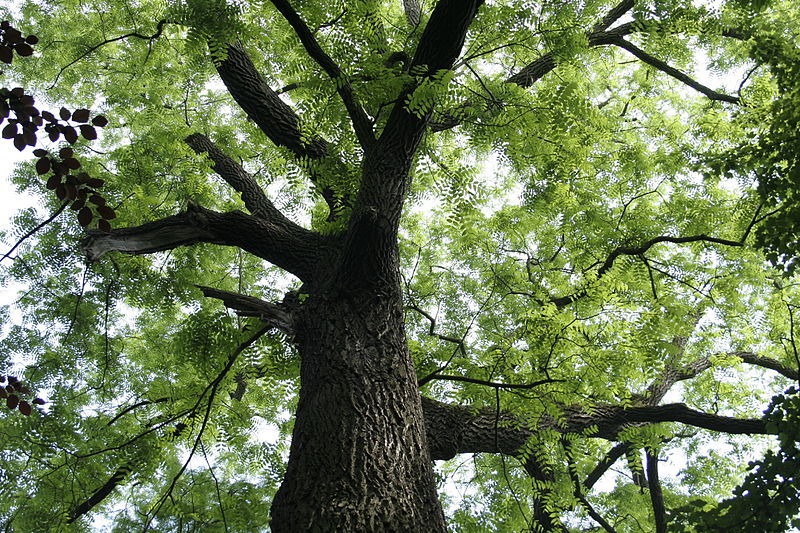Eastern Black Walnut (Juglans nigra L.) : Overview
By Erica Gilgore
Towering up to150 feet above, Juglans nigra L., commonly referred to as the Eastern Black Walnut, is a majestic tree, inherently valuable for its beauty. At my house where I grew up in eastern Pennsylvania, we have several black walnut trees in our yard. As a young child, I remember observing ants tread through the cavernous ridges of the tree’s thick bark, while I rested under the abundant shade of its lush summer canopy. Every year come fall, around mid-September, when the tree’s complex leaves transform into a deep golden hue, jawbreaker-sized black walnuts rain down at various intervals, crashing with a thump on the ground (and on our roof and cars). We always joked about how we should wear helmets when leaving our house. Though we never actually did, it certainly would not have been a bad idea, especially since the walnuts have dented our cars throughout the years. As I look back, I realize how little I know about these mysterious and somewhat hazardous fruits. However, I now understand that these black walnuts are a gift given to us, replete with multitudes of benefits medicinally and nutritionally if we only tap into them. How wonderful it would be to connect more deeply to our ecosystem by directly using what nature supplies in our own backyards on a sustainable, local front. It turns out, the admiration and practical uses of Juglans nigra L. for food, medicine, and wood dates back long before Europeans conquered the New World. Indeed, this tree has a huge legacy and presence in the landscape and culture in the United States.

